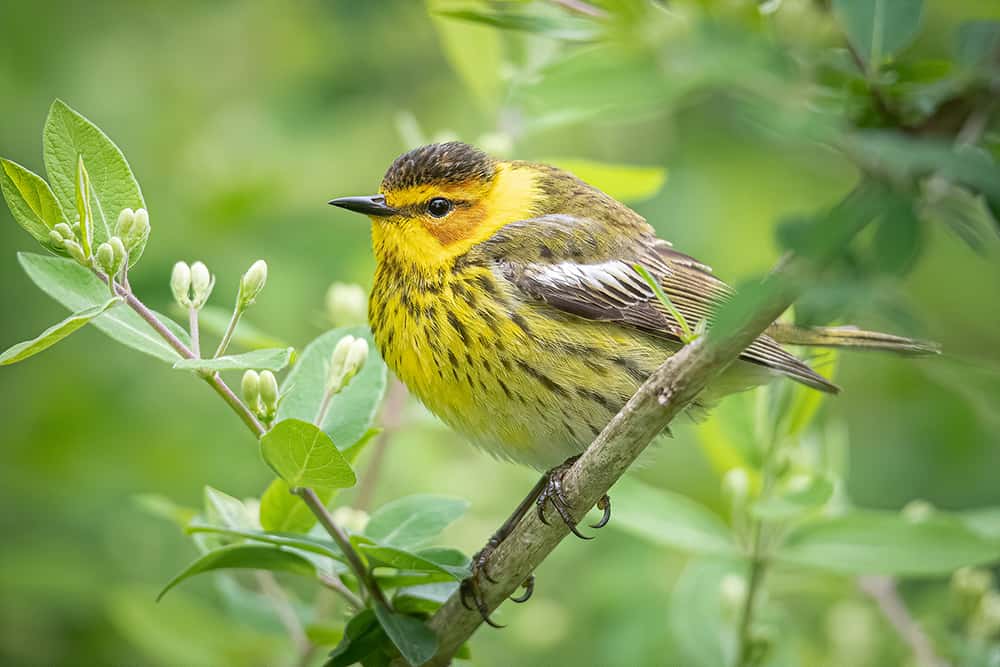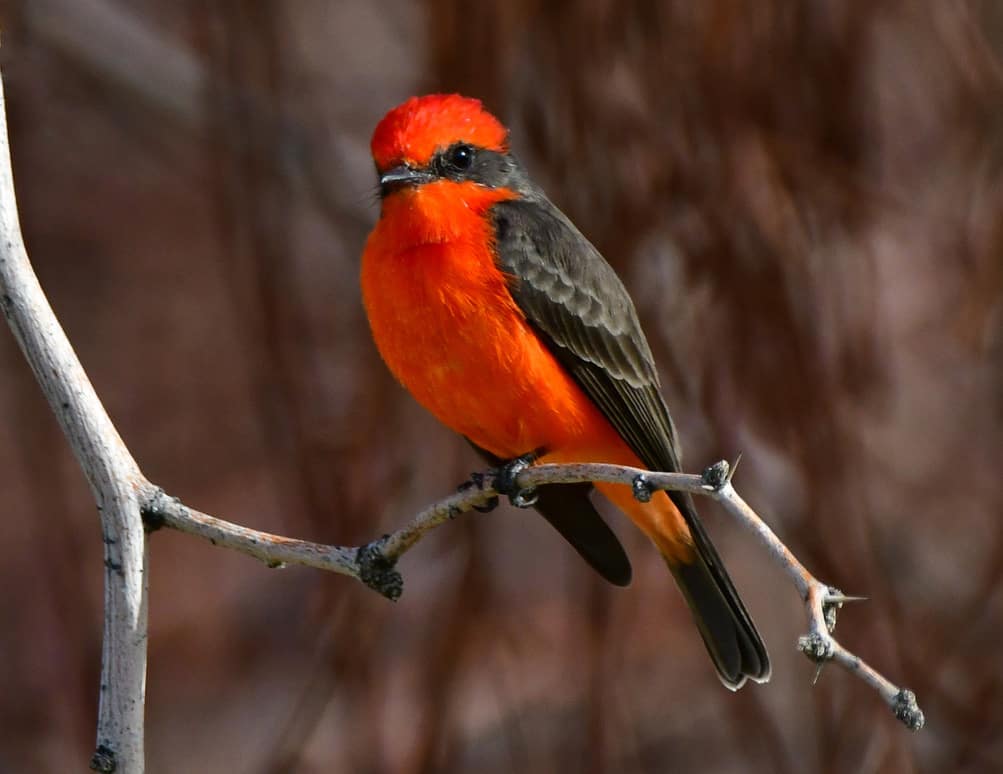Where in the world—and when—might you find a great cormorant, a surf scoter, and a cave swallow on the same day?
Let’s play a game, one birder to another. I’m going to offer a list of bird sightings. You are going to guess where and when in North America they were seen.
American robin, hermit thrush, cedar waxwing.
Doesn’t help much, does it? Could he almost anywhere.
Add Swainson’s hawk and western kingbird.
O.K. That narrows down the possibilities. Somewhere in the West, you think; very possibly summer.
Ash-throated flycatcher, MacGillivray’s warbler, western tanager, Selasphonis sp. hummingbird, lark sparrow.
Certainly the West. But given the ranges of the species, migration seems a more likely possibility now.
Cave swallow.
Definitely Southwest and definitely migration.
Carolina chickadee.
Definitely Texas.
Broad-winged hawk.
Definitely migration.
Great cormorant.
GREAT CORMORANT? AND cave swallow? That changes the picture. It’s a long shot. But how about coastal Florida during some vagrant-packed winter?
Add golden eagle, northern goshawk, long-eared owl, saw-whet owl, and short-eared owl.
Boy, that eliminates Florida.
Add evening grosbeaks and both red and white-winged crossbills.
You must be joking!
And northern parula, American redstart, black-and-white warbler, blackpoll warbler, common yellowthroat, black-throated green warbler, and magnolia warbler, too.
In the same day? In one place? You’re making this up.
Plus a brown-chested martin.
THEY DON’T EVEN OCCUR IN NORTH AMERICA!
Perplexed? You needn’t be. There is possibly only one spot in North America where such an eclectic assortment of species could be assembled—in fact, was assembled—and that place is Cape May, New Jersey. While Cape May’s fame as a migratory junction and a vagrant trap is heralded, the date that all these species were recorded may shock people.
All these birds (and approximately 185 more species) were found in Cape May last fall, on November 11, 1997. This is nearly two months after the traditional peak migration period for Cape May.
How do I account for such an anomalous and unseasonable aggregation of species? Easy. It isn’t anomalous. It is our prevailing attitude regarding peak season that is wrong. Mid-September may have been the best time to witness autumn migration in Cape May 25 years ago. But late October through early November is clearly peak season now. This temporal shift has been known to local birders for years. But North American birders at large have been slow on the uptake. Here’s the story.
In 1976, nature writer George Harrison published a landmark work, Roger Tory Peterson’s Dozen Birding Hotspots. The book was not only a good read, but it was also a primer for a growing host of birders seeking out key birding sites to visit. Cape May was one of those 12 sites.
The chapter treating the author’s visit to the Cape recounts the thrill of experiencing a migratory fallout, the spectacle of the Cape’s hawk migration, and the massed concentration of monarch butterflies. The author concludes his account with this tip to readers: “Recommended time to visit: September 15 to 25.”
Over the years, many birders and many tour groups have adhered to this timetable. In recent years, many have been disappointed with their visits. Nature is dynamic. Populations rise and fall. Because of the sad decline of many Neotropical migrant species— the flycatchers, thrushes, vireos, warblers, tanagers—September fallouts are not what they once were. Where the passage of a September cold front once precipitated massed fallouts of warblers, now numbers are more modest. Where lingering pockets of birds could always be found between fronts, birders coming to Cape May in September may find woodlands disquietingly quiet.
Added to the disadvantage of hitting Cape May during a stretch of front-free weather is the absence of birding alternatives. By mid-Septemher, shorebird migration is decidedly on the downside. Waterfowl and seabird migration is still a rumor on the horizon. Cape May’s accipiter and falcon—dominated hawk migration doesn’t surge until late September and early October.
In fact, about the only things found in superabundance in Cape May in September are butterflies (some years) and tourists (always). Yes, sadly, Cape May’s peak tourist season now runs into October, with the predictable result that motel rates remain high.
That’s the bad news. The good news is that although Neotropical migrants have declined, the populations of the late season, middle-distance migrants remain high. In the past decade, the greatest migratory fallouts experienced in Cape May have not involved great numbers of warblers and vireos. They have involved kinglets, robins, bluebirds, cedar waxwings, assorted sparrows, and winter finches.
I recall the greatest migratory fall out that I ever witnessed. It was late October, and as dawn broadened, the sky over Cape May sparkled with shards of sunlight—the reflected light flashing from tens of thousands of descending wings.
There was only one other person on the hawk watch that day. We had the entire flight to ourselves.
I recall another fallout, one whose dates straddled October and November. I was leading a group, and the fortunate participants were treated to the sight of half a million robins passing overhead; a sight so compelling that participants had to be constantly reminded, “Watch your step! Watch your step! Tired kinglets underfoot! Watch your step!”
You say you aren’t impressed by robins (or kinglets)? That is because you haven’t seen half a million pass in a mere two-hour span. But if the mother lode of “lawn plovers” doesn’t fire your imagination, how about a massed number of seabirds, like the 73,776 seabirds (mostly scoters) recorded at the Avalon Seawatch on October 26, 1997?
The peak of Cape May’s million-bird seabird flight occurs during the last week in October through November and involves thousands of red throated loons, thousands of sea ducks. thousands of northern gannets, and a few eiders, jaegers, and the occasional alcid. To witness the spectacle, observers need only drive to the north end of the town of Avalon and join counters, interpretive interns, and others who have gathered to see the flight.
How about hawks? Do large numbers of hawks impress you? Then consider that the daily average for different raptor species tallied at the Cape May Hawk Count during the first 10 days of November 1997 was 11(15 species were seen during the period) and that the average daily hawk count during this period exceeded 500 birds per day.
November might fall after the numeric peak of Cape May’s raptor migration, but it is still prime time and the period during which peak species diversity occurs.
Or consider owls. The peak of the owl migration occurs in late October and early November. On mornings after a clear, cold, windless night, birders vie to be first down the trails of Cape May Point State Park in hope of surprising a roosting long-eared or saw-whet owl. At dusk, birders standing on the platform in the South Cape May Meadows watch roosting birds spiral aloft against the backdrop of setting sun.
How many owls? Well, it’s hard to say, and numbers do vary from year to year. But in 1995, 637 saw-whets were captured and banded, most of them in November.
No, late season visitors to Cape May need not worry about missing out on seeing birds or experiencing great diversity. And while extralimital species can and do occur in Cape May at any time of year, so many waifs habitually turn up in early November that the second week of the month has even acquired the nickname “Wild Card Week,” the week probability takes a vacation and possibility reigns in Cape May, New Jersey.
Why then? Nobody knows for certain. But chances are it has to do with climate, weather patterns, and Cape May’s configuration. Many Wild Card Week notables are insect-eating species. During late October and early November, winter starts getting serious over the Northeast. Temperatures fall and stay low. Insects die en masse, depriving insectivores of food.
Widely distributed vagrants are flushed out by the cold, forced to find some place that has thus far eluded winter’s killing grip. Owing to its relatively southerly latitude (Cape May lies as far south as Washington, D.C.) and the climate-ameliorating effect of surrounding water, whose temperatures remain in the 50s, Cape May is such a place. In some years, the town of Cape May does not even experience a frost until December. Butterflies have even turned up on the Christmas Bird Count.
So when vagrants flee winter, some at least find temporary sanctuary in the relative warmth of Cape May. That is where a growing number of savvy birders find them. Here are some Wild Card encounters: black-chinned hummingbird, November 10—15, 1996: calliope hummingbird, November 23 to December 5, 1996; ash-throated fly catcher, nine records between November 9 and December 13; western kingbird, November 24, 1984; violet-green swallow, November 7—13, 1992; cave swallow, five fall records, November 3—20: rock wren, December 2 to March 31, 1993; mountain bluebird, November 12, 1988; Bell’s vireo, October 30 to November 4, 1994, and December 4, 1996 to January 3, 1997. (Source: Birds of Cape May, by David Sibley.)
The point of this article is not to discourage anyone from coming to Cape May in late August through September. Warblers are enticing; early migration can still be exciting; temperatures are delightful. The point is to point out an overlooked opportunity, one that local birders have appreciated for many years.
See you later?




